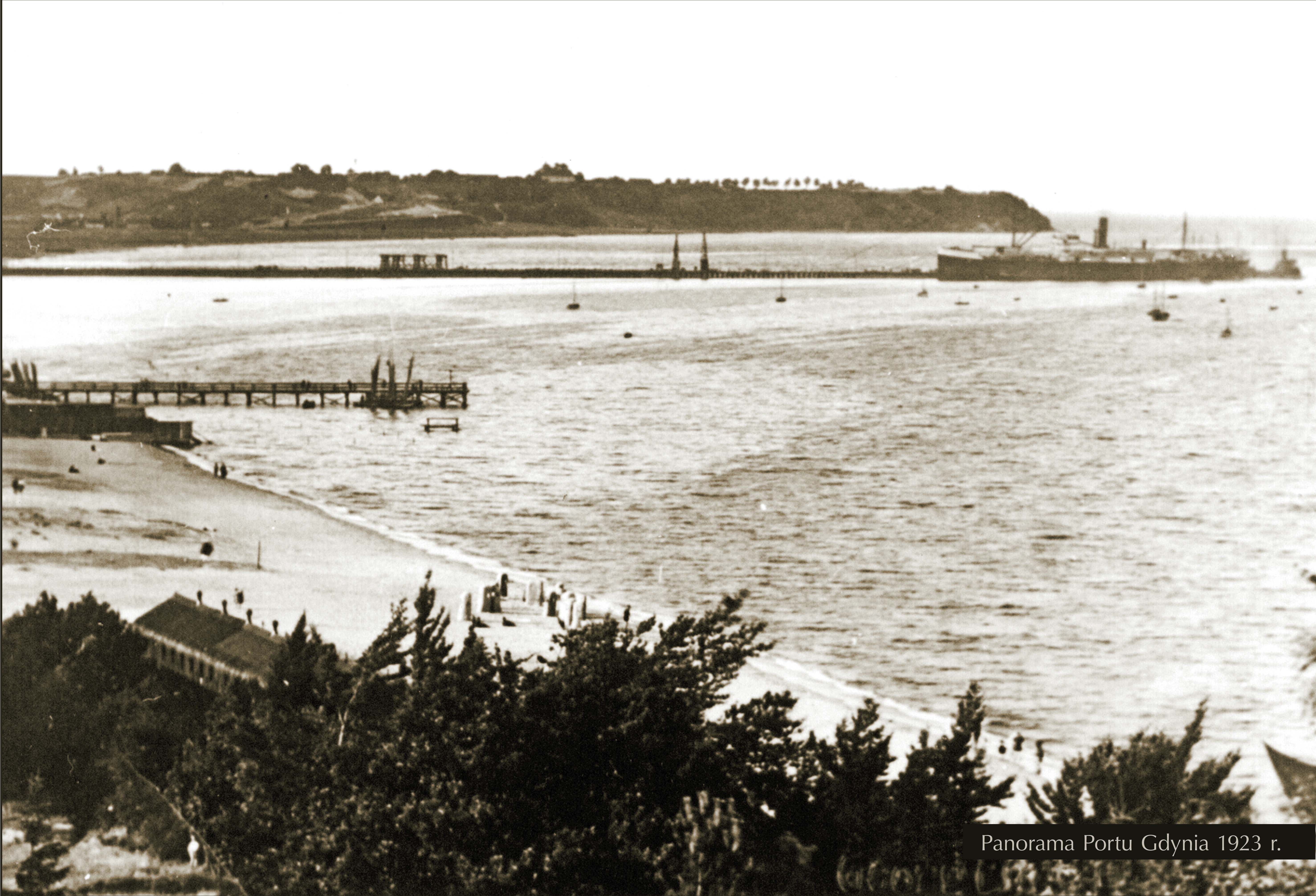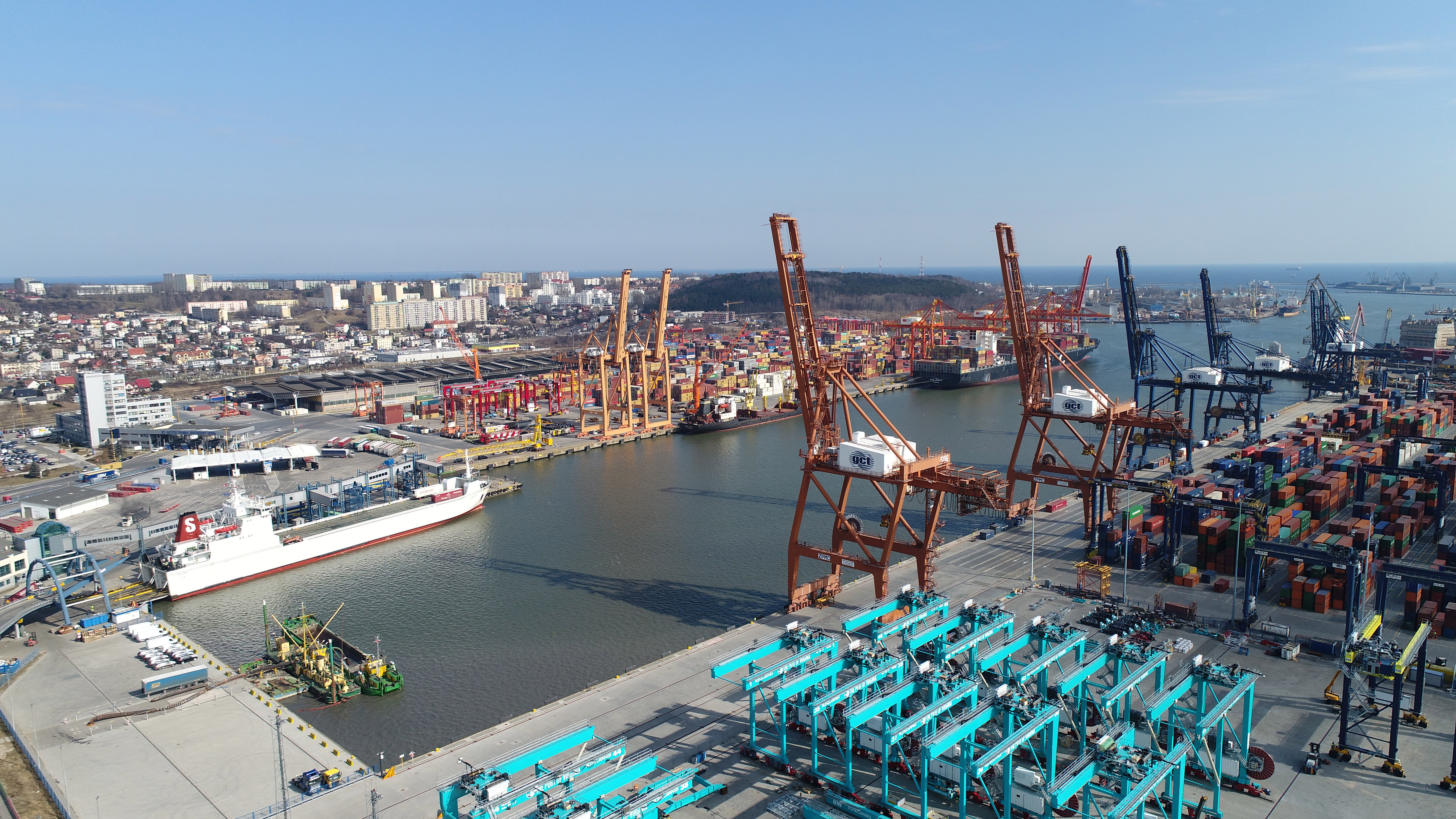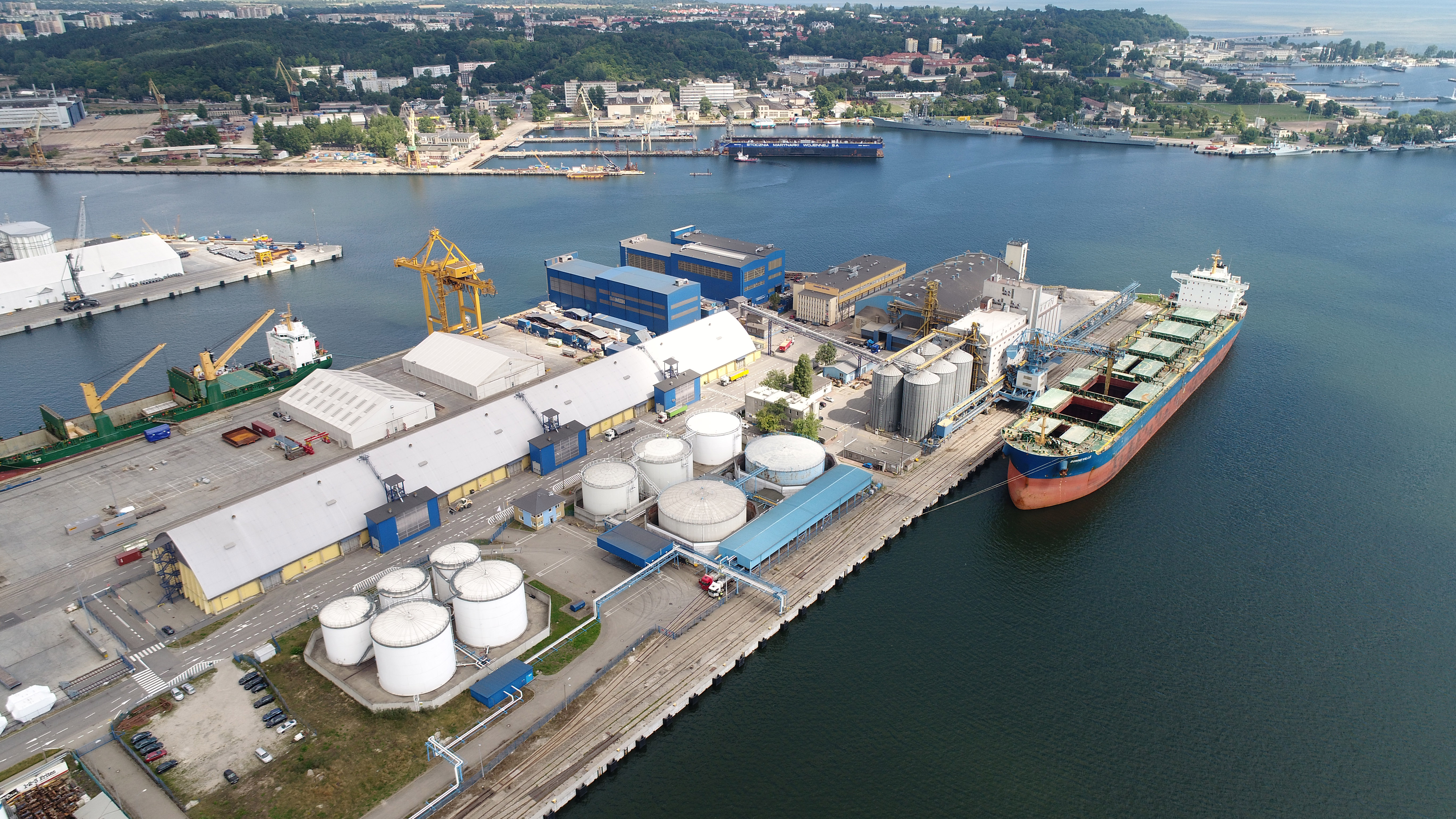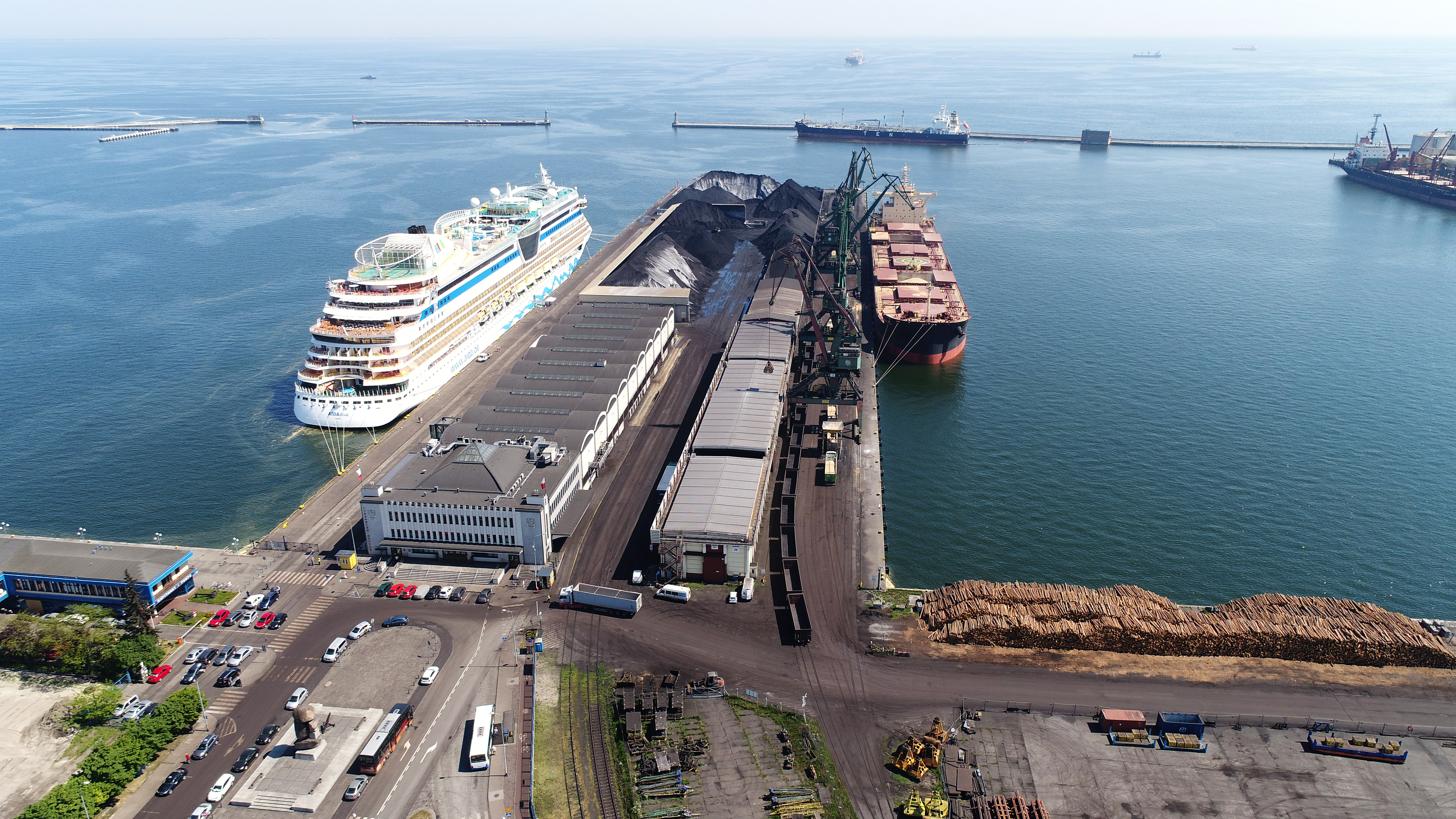The Port of Gdynia is older than the city by all four years. And there is nothing surprising about this fact, because the city of Gdynia was built because of the port. The decision made 96 years ago in the beginning of the Second Republic of Poland, became a great symbol of the reborn nation. The Gdynia port was a life visual expression of Poland at that time – its economic potential and technical design.
It is worth diving into history and remembering that Gdynia was already pointed by the king Władysław IV hetman Stanisław Koniecpolski and the royal engineer Jan Pleitner as a place “much suitable” for construction of a military port. Yet, it wasn’t constructed – the bay of Puck and a stronghold port on the Hel peninsula were reconstructed. Another initiative – more contemporary – a construction of port in the village of Gdynia was taken in 1893, when 24 fishermen from Gdynia and 28 from Oksywie wrote a petition to the Prussian authorities about it. The next attempt to build a fishery port near Oksywia took place in 1910. These were unfulfilled dreams. Already in the beginning of February 1920, when Poland took over its reign granted under the Versailles Treaty in Pomerania and the Seaside, it was considered that a young nation has to build a sea port.
The reborn Second Republic of Poland commenced building the port of Gdynia. On the 6th of May 1920 the manager of the Division for Ports Construction, Technical Section of the Maritime Matters Department at the Ministry of Military Affairs, engineer Tadeusz Wenda was delegated to the Seaside in order to check the possibilities of constructing a new port. Tadeusz Wenda was an experienced engineer, a constructor of iron railway in the Polish Kingdom and in Russia and the Baltic maritime ports in Windawa, Rewal and Rojen by Riga. On the 20th June 1920 Tadeusz Wenda submitted a “report of activities”. In the second part of the report, after pointing out that neither Puck or Rewa were suitable for a port, he stated that “Among other locations by the Baltic seaside I Poland (not mentioning Gdańsk), the most suitable place for building a military port (as well as commercial port of needed) is Gdynia, and in particular, the plain between Gdynia and Oksywie, located in the distance of 16 km from the New Port of Gdańsk.
Plans of building the port of Gdynia became a specific interpretation of the political situation after the Versailles Treaty. The Free City of Danzig and latter restrictions in using the port of Danzig by Poland caused the situation in which thirty eight parliament members submitted a motion calling the Polish government to issue an act on building the maritime port in Gdynia as soon as possible. The government fulfilled the motion only a year later. On the 23rd of September 1922 the Parliament took the decision on building a port in Gdynia. Article 1 of the act stipulated as follows: “The Government is hereby authorized to issue all necessary orders to construct the maritime port in Gdynia in Pomerania as the port of public use.”
First, there was a concept of building a Temporary Maritime Port and Shelter for Fishermen. In the small port – as it was planned – within one year the handling volume was to be about 2,5 Million tons of goods. The same handling volume was at that time in Gdańsk. In the first quarter 1923, the port structure was built in the form of the main pier 550 meters long, a breakwater 170 meters long and a wharf 150 meters long and 7 meters deep. The ceremonial opening of the Temporary Maritime Port and Shelter for Fishermen was done on the 29th April 1923 in the presence of Stanisław Wojciechowski, the President of Poland. The port of Gdynia at that time could take even large sailing units. The first ocean ship that entered the port of Gdynia was welcomed with honours on the 13th August 1923. A French ship “Kentucky”. Its entering to Gdynia was a coincidence, actually, as a result of strike of port workers in Gdańsk, it sailed to Gdynia, where it took over 1700 passengers, mainly seasonal agriculture workers and immigrants. It initiated the operating of the Gdynia port as the full-sea commercial port. The economic crisis of the reborn Polish nation was the reason why construction works in the port of Gdynia were stopped in the first half of 1924. Fortunately, the interest in building the port was expressed the French capital, which already invested in the coal mines in the Upper Silesia region and covered the French deficiencies in “black gold” with excavations from the Polish mines. This is how a French-Polish Consortium was created, which aimed at building the port of Gdynia. The date of finishing the works was set for 1930.
Basins of 320 hectares of water area were built. The piers had 11 thousand meters of length. A warehouse was constructed of the area 200 thousand meters square and a freezer for 1200 wagons and an elevator for 15 thousand tons, as well as rise peelings machines and oil mill. 75 large cranes were operated on the port wharfs. Apart from the port basins, there were other structures erected, the Maritime Railway Station, for long-sea passenger and immigrants transport service, the Port Office, the Maritime Administration Office and several administration-social buildings, including the building of the Customs Director Office where currently the Gdynia Port Authorities have their seat.
Numerous communication investments were made as well – the most important was a railway line Herby Nowe – Gdynia. It enabled a direct connection of the Silesia region with the port of Gdynia, bypassing the area of the Free City of Danzig.
Within a few years, the port of Gdynia became the largest port in the Baltic Sea and one of the largest ports in Europe, which had higher turnover than the ports in Copenhagen, Bream, Amsterdam, Genoa, Napoli and Trieste.
The development of the port of Gdynia was stopped by the second world war. Gdynia under Nazi occupation lost its character of a commercial port – the handling devices were disassembled and transported away. The port was changed into a huge base of Kriegsmarine – U-boat crew were stationed and trained there. The war changed the port in debris. Breakwaters were damaged in 90 percent, piers in 45 percent, handling equipment in 50 percent, and warehouses in 25 percent disappeared. Entries to the port was sank by ships and vessels. The main entrance was blocked by a wreck of a coast defence ship “Gneisenau”. The destroyed port of Gdynia – despite difficulties and damage – serviced the first ship already on the 8th of July 1945. It was a ship under the Finn flag named “Suomi Neito”. By the end of 1945 there were 531 port calls, and 563 thousand tons of cargo were handled. As a result of reconstruction, and then extension, the port of Gdynia at the end of the 60s exceeded the handling capacity it had in the 30s. From a bulk volume port, it became a port of general cargo specialised in handling of the most work-consuming and difficult cargo groups, but still it also handled bulk cargo. Gdynia was famous for servicing such large ships as the American “Manhattan” of deadweight 106 thousand DWT, which entered the port with a load of 66,5 thousand tons of grain.
In the beginning of 70s of the 20th century, the port of Gdynia was the first Polish port having a container terminal. Already in 1975 there were 500 thousand tons of cargo in containers handled in Gdynia. As of the 70s, the port of Gdynia had a priority among all Polish sea ports in containers handling – in the 90s of the 20th century and in the first decade of the 21st century over 80 percent of containers coming to Poland by sea were handled in Gdynia.
The biggest – a flagship one – investment in the 70s of the 20th century in the Port of Gdynia was constructing from basis the Baltic Container Terminal (BCT). The BCT opening date was 29th October 1979 – the day when the first ro-ro ship “Baltic Eagle” hit the Hel peninsula, joining the port of Gdynia and England.
Currently, the Port of Gdynia is a modern, universal port, one of the leaders in cargo handling in the Baltic Sea. It specializes in general cargo handling, including mainly the unitary, container-transported loads and ro-ro loads, based on a developed network of multimodal connections with facilities. Gdynia is also a port servicing passenger ferry transports.
The location on the southern seaside of the Baltic Sea makes the port of Gdynia an important chain in the Baltic-Adriatic corridor in Trans-European Transport Network TEN-T. It is an important transport hub for relations between the Central and Eastern Europe and Scandinavia. Regular shipping lines connect the port of Gdynia with the biggest ports of Europe, such as Rotterdam, Antwerp, Hamburg or Bremerhaven.
The port has modern equipment for handling and storing, dedicated to various type of cargo. It handles yearly about 21,2 Million tons of loads, and in 2017 it serviced also 75 thousand of passengers (it hosted 41 cruise ships then).
The handling of container loads in the port of Gdynia (710 698 TEU in 2017) is the domain of two modern container terminals:
- Baltic Container Terminal Ltd. (owned by International Container Terminal Services, Inc. ICTSI).
- Hutchison Ports Gdynia S.A. (Hutchison Port Holdings Limited).
In the port of Gdynia there are also terminals dedicated to bulk cargo:
- Bałtycki Terminal Zbożowy Sp. z o.o.,
- Morski Terminal Masowy Gdynia Sp. z o.o.,
- OT Port Gdynia Sp. z o.o.,
- Bałtycka Baza Masowa Sp. z o.o.,
- KOOLE TANKSTORAGE GDYNIA Sp. z o.o.,
- Terminal ONICO GAS,
- cement terminal Aalborg Portland Polska Sp. z o.o.,
- bulk cargo terminal SPEED Sp. z o.o.
A bigger turntable, a new ferry terminal, a logistics centre and deeper port basins along with a water track as well as a barge for LNG bunkering – these are the biggest investments until 2020 for which the Gdynia Port Authorities will spend over 1 billion PLN. The funds will be come from the European Union allocation and from own resources, which the port has in a sufficient quantity. In 2017 there were 21,2 million tons handled in the Port of Gdynia, which was a record in the port history. It is almost 9 percent more than in 2016. All in all, there were over 40 percent of coal and coke more handled, and nearly 40 percent more oil and oil derivatives. In 2017 there were also more containers handled in the port, more ore, timber and general cargo. There were also more ships that entered the port in 2017, namely 3540, compared to the previous year number 3501, where the highest increase was related to ferries and container ships. There was also increase in the average tonnage of bulk cargo ships entering the port. And what is most important – excellent handling results were followed by excellent financial results. The net profit of the Gdynia Port Authorities exceeded 77 million PLN and it is higher by 28 percent compared to the result achieved in 2016. The boom in the Port of Gdynia continues. Thanks to the high dynamics in loads growth from January to June 2018, the Port of Gdynia handled 11,5 million tons – this is by 11,3 percent more than in the same months 2017.
The Port of Gdynia holds the position of the most important and safest Polish passenger port, which hosts the biggest cruise ships sailing on the Baltic Sea. This year the season for passenger ships started on the 9th May and it will last until the 19th October 2018. The port of Gdynia will welcome 51 big cruise ships with over 100 thousand passengers. The average length of a ship this season is 255 m. What is more, 49 units entering the port this season has over 200 meters of length.
– Passenger cruise ships in the Port of Gdynia has been a long tradition, which gives a special prestige to the port compared to other ports on the Baltic Sea. – says Adam Meller, the President of the Board at the Port of Gdynia – the Gdynia Port is an important passenger in Poland and I hope the number of passenger ships coming to our port will increase every year – he adds. The cruise ships in Gdynia are the best promotion both for the Pomerania Region, the port and the city.
Considering a dynamic development of maritime transport services the Port of Gdynia Authority decided to extend largely the Port by constructing the External Port far in the sea. The first works related to the investment process preparation are ongoing. The preliminary, estimated cost of investment is 1 billion Euro. The Port of Gdynia Authority S.A. is looking for a partner to undertake this great investment together, which will involve both sharing of inputs and profits in the future. Well, a favourable market situation and current trends in transport development indicate this investment is justified.
– We are happy about handling figures, because they show the assumed strategy of the Gdynia Port development is justified and we follow the right direction – says Adam Meller, the CEO of the Port of Gdynia Authority S.A. – This brings us closer to the flagship investment project which is construction of the External Port. It is a complicated project, but we are not afraid of challenges. We know it will bring real income to the budget of our country and the city of Gdynia. We will seek support for it and we will hold negotiations with prospective investors.







